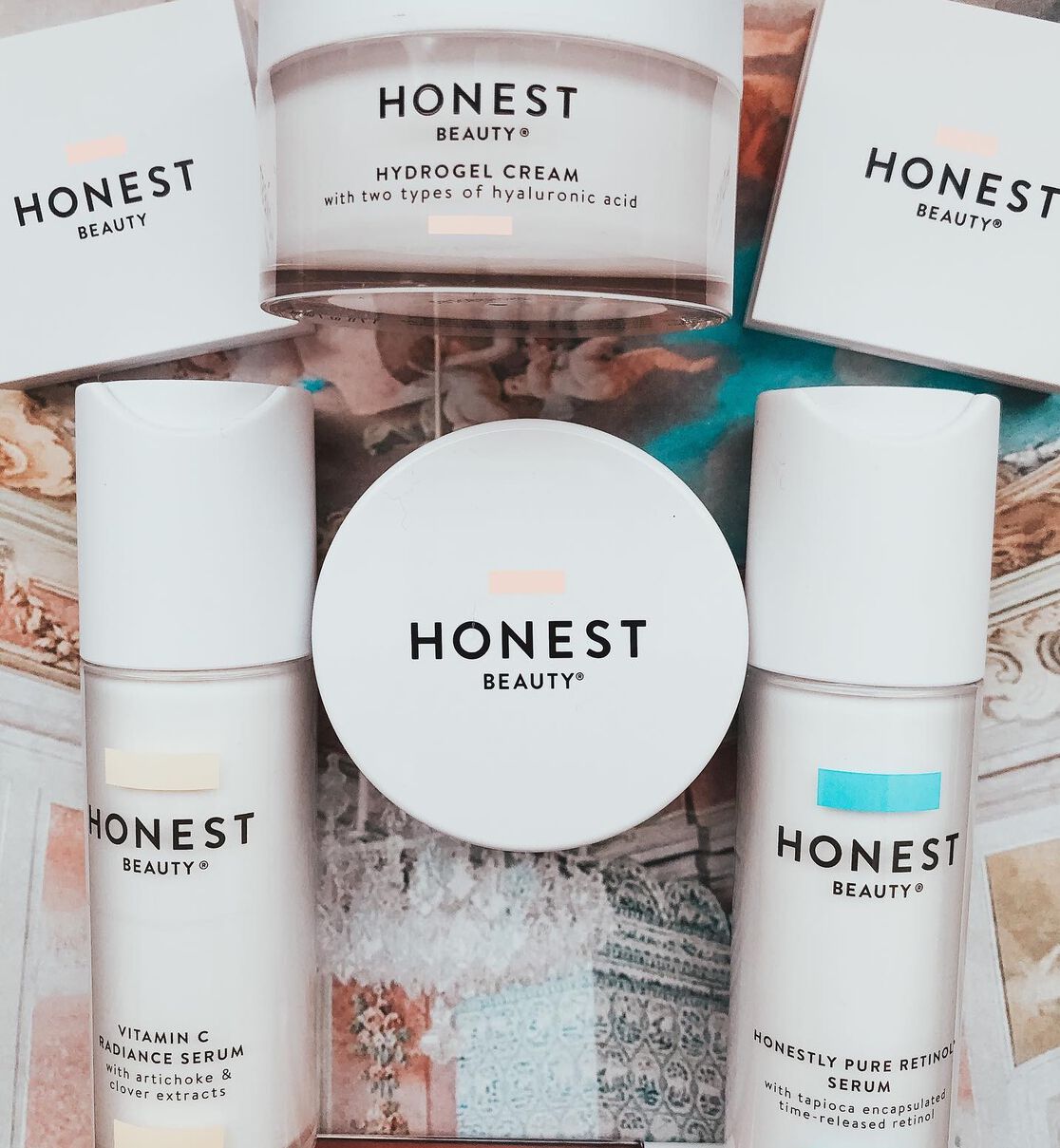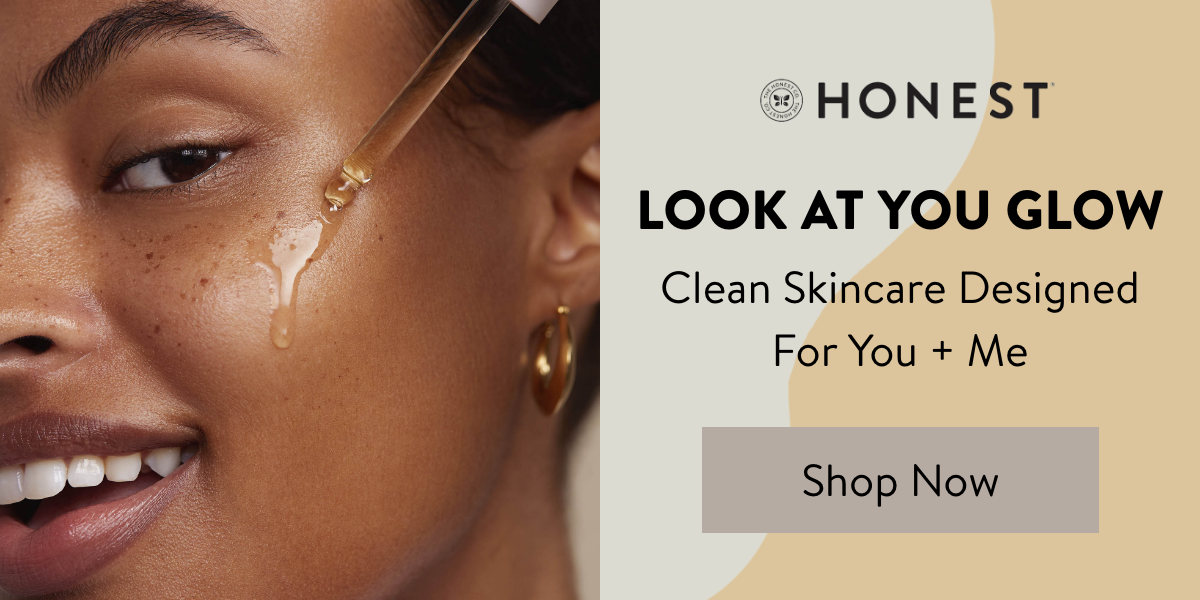Image shared by @la_cede
Though you might be surprised to learn it, dark spots and uneven skin tone are a common occurrences, and in most cases, harmless. However, it can be frustrating to have discolored patches of skin on your face, harmless or not.
So you may be wondering, what is hyperpigmentation and how you can get rid of it? Never fear, we aren’t leaving you on your own to figure out how to reduce hyperpigmentation. Keep reading for everything you ever wanted to know about those dark spots and what skin care products you should start using today to minimize this uneven pigmentation.
What is Hyperpigmentation?
Hyperpigmentation is an overproduction of the pigment in your skin that gives it color. This pigment is called melanin. The result of an overproduction of melanin is that you may have brown spots or patches of skin that look darker than the skin around it.
Skin hyperpigmentation can cover your entire body, it can cover large areas of your body, or it can just occur in small dark patches, such as on your face. It can also affect any skin type.
Hyperpigmentation is not an actual medical or skin condition but merely a term doctors use to help describe how it looks when there are darker patches of skin surrounded by normal skin.
Though hyperpigmentation is usually benign, sometimes it can be a warning sign of an underlying medical condition. If you are worried, consult a dermatologist.
Types of Hyperpigmentation
There are 3 different types of hyperpigmentation.
1. Melasma
It’s believed that melasma is caused by hormone fluctuations. Often, melasma occurs during pregnancy. Melasma will typically appear on the face and stomach and occurs most often in women.
2. Age Spots
Age spots may also be called sun spots or liver spots. These spots emerge as the result of too much sun exposure. You will usually see age spots on areas of skin that are most exposed to sunlight, including the arms, legs, and face.
3. Post-Inflammatory Hyperpigmentation
This type of hyperpigmentation is usually the result of some kind of injury or inflammation of the skin. Acne, cuts, burns, and even lupus can trigger post-inflammatory skin hyperpigmentation.
Causes of Hyperpigmentation
- DISEASES AND MEDICATION
Depending on its composition, medication such as chemo drugs, topical steroids, antimalarials, anti-seizure drugs and antibiotics can trigger hyperpigmentation. It is also a symptom of certain illnesses such as Addison’s disease and other autoimmune diseases. Hyperpigmentation can also be caused by vitamin deficiencies as well as metabolic disorders.
- SUN EXPOSURE AND SKIN TRAUMA
Melanin creation is your body’s natural way of blocking harmful UV rays when your skin is not protected. This is what leads to tanning. A little bit of sun is great, but an excessive amount can disrupt your body’s natural processes and lead to hyperpigmentation. Dark spots (also known as “sun spots”), melasma and postinflammatory hyperpigmentation become discolored with sun exposure. It also leads to the darkening of scars, cuts, scrapes and other skin trauma such as acne scarring, psoriasis and eczema. When new skin grows back, there’s already a possibility that the skin is slightly discolored after the wound heals. Adding sun exposure can further discolor the area due to the possibility of excess melanin production.
- HORMONE CHANGE AND AGING
Two other major factors of hyperpigmentation are hormone changes and aging. Hormone changes, especially among women, are the main cause of melasma. This type of hyperpigmentation is thought to occur when estrogen stimulates the overproduction of melanin with sun exposure. Hyperpigmentation is also seen as a side effect of hormone treatments, hormone-altering drugs such as certain oral contraceptives and pregnancy. Similarly, as skin ages, the size of its melanin-producing cells, melanocytes, increase in size and decrease in number. This results in a sparse distribution and more prominent age spots (or sun spots), especially in those over.
How Long Does It Take Hyperpigmentation to Fade?
Keep in mind that hyperpigmentation does not always fade. Even after treating hyperpigmentation, some pigment will be permanent. Without any treatment at all, it can take 3 to 24 months to see improvement. It really depends on the severity of darkened skin and how much the hyperpigmentation covers.
How Do You Prevent Hyperpigmentation?
One of the best ways to prevent hyperpigmentation is to wear a broad-spectrum sunscreen each day. Many different types of hyperpigmentation results from little to no sun protection, so if you can reduce your exposure then you will help prevent discoloration from occurring. If you are already experiencing the effects of hyperpigmentation and are wanting to know how to combat this, prioritize limiting your exposure to UV radiation and make it a daily habit to wear sunscreen that is SPF 30 or higher. You should wear sunscreen even during winter or on cloudy days.
For hyperpigmentation that occurs because of trauma or injury, keep your hands off your skin and do not pick. If you pick at acne, spots, and scabs, or even squeeze a tempting blackhead, you will trigger inflammation.
Inflammation increases the production of melanin and before you know it you will have unsightly skin discoloration. Remember, the more you mess with a tiny spot or wound, the worse it will begin to look.
What is the Best Treatment for Reducing the Appearance of Hyperpigmentation?
See a dermatologist to help you determine the underlying cause of your hyperpigmentation and come up with ways to treat and fade your dark spots safely. They can also help you come up with the proper order of face products to ensure maximum effectiveness of their ingredientsand diffuse hyperpigmentation. Some recommended skin treatments include:
Hydroquinone Cream
Hydroquinone is a topical medication that can be applied to the skin in different strengths, to help fade dark spots. The enzyme that helps produce melanin is blocked by hydroquinone, allowing the skin to lighten over time. However, it pays to be careful with this topical, as it can lighten your natural skin color too if applied incorrectly.
Many hydroquinone creams contain other helpful lightening agents too, like vitamin C, glycolic acid, kojic acid, and retinoids like tretinoin to increase its efficiency. Be careful not to use hydroquinone as a hyperpigmentation treatment for a prolonged time period as it can actually cause unwanted darkening of the skin if you don't monitor its use closely.
Topical Retinoids
Topical retinoids work by increasing the rate of cell turnover and are typically used as an acne treatment. However, because of the high cell turnover, it also works well to help fade that pesky dark spot or acne scar caused by hyperpigmentation. The only problem with these treatments is that you can’t always get them without a prescription.
You also have to be careful especially if you have sensitive skin because if they cause redness or skin inflammation, they can be a trigger for hyperpigmentation instead of a hyperpigmentation treatment option. Another downside is that topical retinoids and hydroquinone both can take a few months before you see an improvement.
Azelaic Acid
If you aren’t able to use hydroquinone for some reason, this could be a great alternative for treating hyperpigmentation. It’s believed to work just as well as hydroquinone and it works by the same mechanism, speeding up skin cell turnover and reducing inflammation. Like hydroquinone, it’s used to treat acne and can only be obtained through a prescription.
Over-the-Counter Skin Care Products for Hyperpigmentation
Sometimes it’s not practical to see a dermatologist to try to treat dark spots. That’s okay because there are plenty of over-the-counter options that can help fade them for you.
Retinol Serum
There are OTC retinoids and retinol serums that you apply to the face to inhibit the enzyme that produces melanin which causes pigment spots. It works much like prescription retinoids, stimulating cell turnover, although results may take longer since it’s not prescription strength.
Glycolic Acid
Glycolic acid is a popular ingredient for many skin care products because it works so well at reducing discoloration, ridding the skin of dead skin cells, and regenerating new skin cells. It comes from sugar cane and helps keep pores clean and reduce the appearance of hyperpigmentation. Our glycolic acid mask is a wonderful product that you can use morning and night.
Vitamin C
We all know what Vitamin C is, but what are the benefits of Vitamin C for your skin exactly? Vitamin C is a vital component of any skincare routine and even more so if you suffer from hyperpigmentation. Vitamin C works a lot like retinol, inhibiting the production of melanin by inhibiting tyrosinase and keeping dark spots from marrying your skin. The benefits of vitamin C are threefold. Not only does it lighten dark spots, but it also helps brighten your complexion and neutralizes the damage from free radicals related to excessive sun exposure. Products like our Vitamin C Radiance Serum and boosters can help prevent hyperpigmentation and reduce the appearance of existing dark spots.
Kojic Acid
Much like retinol and vitamin C, kojic acid inhibits tyrosinase. This reduces the production of melanin and by extension, reduces or prevents the appearance of hyperpigmentation. Kojic acid is a fan favorite for many skin care products because of how well it evens skin tone, lightens, and treats acne. It also has antioxidant properties that help stimulate cell regeneration. Out with the old, in with the new!
Aloe
Bet you didn’t know that grandma’s favorite sunburn treatment also helps fight melanin and prevent hyperpigmentation! It works a lot like the previously mentioned treatments, inhibiting tyrosinase and reducing the impact sun damage can have on the skin. You can even apply aloe directly from the plant itself, with little side effects. Aloe also happens to be a staple ingredient used in many skin care routines for dry skin and may promote healing.
Moisturizer with Oomph
When encouraging cell turnover, it’s important to keep your skin well-hydrated. When it comes to how to hydrate skin, a great moisturizer with ingredients like hyaluronic acid, glycerin, and retinol can be an effective addition. This moisturizer can help lighten areas that have dark skin pigmentation while drenching your skin in moisture it desperately needs.
How Can I Lighten My Hyperpigmentation Fast?
Under the care of a dermatologist, you may try chemical peels or laser treatments to reduce hyperpigmentation depending on what the initial cause was. There are also procedures like intense pulsed light and microdermabrasion that may offer some success in fading dark spots quickly.
There are a lot of options available when trying to figure out how to reduce hyperpigmentation. When trying out new skin care products, look to natural solutions first, before resorting to prescription medications that may come with unwanted side effects. Be sure to practice a regular skin care routine daily, and use products that support cell turnover and proper hydration and balance. Don’t lose hope. Honest is here to help. With consistency, time, and the right products, hyperpigmentation can fade.
Sources
- Aging changes in skin. (n.d.).
- Alpha hydroxy acids. (2017)
- Chemical peels. (n.d.).Oral contraceptives
- Hydroquinone studies under the National Toxicology Program (NTP). (2015)
- Hyperpigmentation. (n.d.).
- Hyperpigmentation. (n.d.).
- Mayo Clinic Staff. (2018). Chemical peel.
- Melasma. (n.d.).
- Penn Medicine Study Uncovers New Pathways that Control Skin Tanning and Lightening. (2016).
- Understanding the ingredients in skin care products. (2015).
- What can get rid of age spots? (n.d.).
We aim to provide you with the most honest and credible information possible. This article was reviewed for accuracy by The Honest Team and was written based on sources that are linked at the bottom of the article.
blog_review_statement




